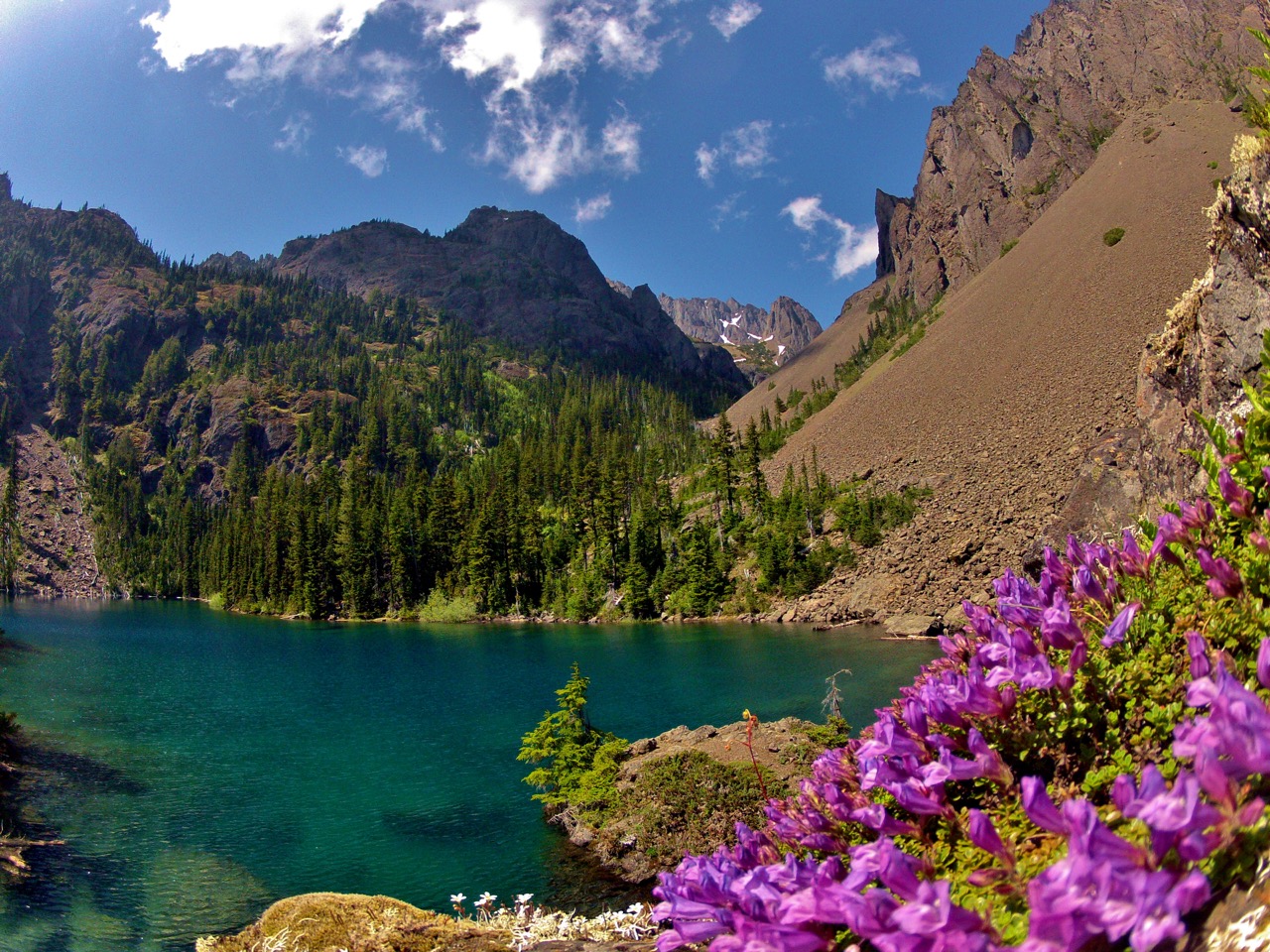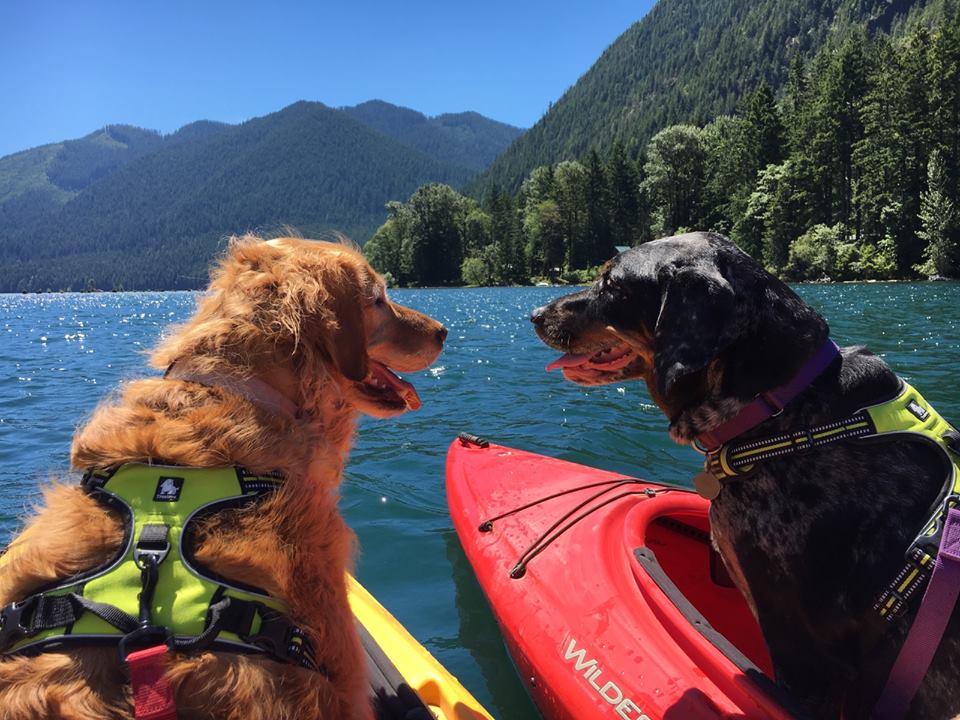Few places in the world are as beautiful as Olympic National Park. Year round, the upper left corner of the contiguous United States inspires wanderlust and leaves visitors in awe with true wilderness beauty and the spring months are no exception. As the temperatures warm up and the delightful daylight hours grow longer, the snowpack in the rugged mountains begins to melt. The melt transforms the regions waterfalls, rivers and creeks into beautiful torrents of water. Roads reopen after months of being closed and animals start to wander around with their new offspring. Whales migrate offshore, hikers return to once snow-covered trails and all seems right with the world. Spring in Olympic is an experience your soul deserves and a perfect way to kick start your year of adventures in the great outdoors.
Spring is finally upon us, ending what many will remember as the wettest, snowiest and wildest winter on record. Numerous lowland snow events, landslides, toppled trees and buckets of rain seemed to be a daily occurrence for the winter, dampening not just the ground, but also the mood of hikers, climbers and those hoping to reconnect with the wilderness around the region. For the past three months, the Pacific Northwest has been inundated with precipitation and short on sunlight, making for a well-deserved end to the darkest season of the year. While the Pacific Northwest did receive a fantastic snowpack, the majority of outdoor recreation enthusiasts are ready for the return of basking in the warmth from that rarely seen giant orangish-yellow globe. Finally, spring has sprung and we are ready to get outdoors and explore the gloriousness of this stunning season.
REASONS TO VISIT OLYMPIC THIS SPRING

Waterfalls
As the snow melts (we hope), the waterways around Olympic National Park become swollen with runoff, turning even the most mundane waterfall into a majestic cascades of cool, clean water. Waterfalls like Murhut Falls, Sol Duc Falls, Beaver Falls, Mineral Creek Falls, Merriman Falls and numerous other water falls around the peninsula will be incredible. You wont want to miss this. If you want to know the best waterfalls around, check out an article focusing on my 10 favorite easy access falls that I wrote a few years ago, or check out the 22 waterfalls listed on Olympic Peninsula Waterfall trail.

20,000 Gray Whales
In March, April and the early parts of the month of May, the Washington Coast becomes a highway for 20,000+ Gray Whales migrating back to the cool waters of Alaska, with babies in tow. Swimming just 1/2 mile or less from the crashing waves on the rugged beaches of the Pacific Coast, the gray whales partake in not just an amazing migration, but also a chance for the millions who live with a few hours drive of the ocean to see these massive sea dwelling mammals. Stretching the entire length of the Washington Coast, the Whale Trail offers viewpoints, information and even activities during the peak whale watching season. Read more info on this incredible whale migration here.

Empty Trails
Olympic National Park is America’s 7th most-visited National Park, but the majority of visitors come during the months of July through September. During the spring months, most trails are relatively empty, though they might be a little but muddy. Spring allows a chance for hikers and backpackers to go see the melting ice in the high alpine lakes, watch avalanches tumble down the mountains near the Enchanted Valley and explore regions that were nearly impossible to reach during the snowy, winter months. Many accessible mountains will also become hike-able once the snow starts to melt, giving everyone a chance to stand on top of the majestic peaks of the Olympic Mountains. I suggest checking out Colonel Bob Peak above Lake Quinault. You’ll still need rain gear and a sense of adventure, as well as being ready to climb over the downfall from the winter storms, but hiking on the mostly empty trails in spring will give you adventures to temporarily quench your wanderlust. Need a hike? How about 52?

Longer Days And Later Sunsets
One of the best parts of spring is the extra hour we add during daylight savings time. Instead of having to rush off the trails by 5PM, we can now stay out until after 7PM without a headlamp, giving us over 12 hours of light to wander the majestic paths around Olympic. The longer days mean we can push further into the backcountry, even on day hikes, while still giving us time to catch a pristine sunset over a river, lake or the rugged, wilderness coast. For those hoping to catch a stunning sunset, head to the coast. The coast isn’t the only place for sunsets, but it will definitely help those new to the region in experiencing a sunset that might just change your life.

Wildlife and Wildflowers
Spring in Olympic means an increase in wildlife sightings, as the elk, deer, mountain goats, marmots and bears all start to get back into their warm weather behaviors. Around early April, bears will become active in the backcountry, while the soon be be removed mountain goats, Roosevelt Elk and deer start to have their adorably cute babies. The marmots, who live in the higher elevations, will become active in late spring once the snow has melted, breaking the silence of the wilderness with their piercing whistles. Birds will be chirping in the old growth trees while the forest floor will become a freeway for the banana slugs and beetles. Later in the spring, the first of the wildflowers will start to appear, adding a fragment aroma to nearly every trail. The higher elevations will see avalanche lilies and beargrass, transforming the already gorgeous Olympic alpine into a wonderland of beautiful flora.

Open Roads
If all goes as planned, more and more roads will be opening up in Olympic National Park. Now that the major snow events have passed, access to areas long designated as foot traffic only ill be car accessible, helping you and your hiking friends push further into the incredible wilderness of Olympic National Park. Later in the spring/summer, once the snow melts, the roads to Deer Park and Obstruction Ridge will open. Who knows, we might even see the Elwha’s Whiskey Bend Road reopen! Probably not, though. For more road and trail conditions, check out the Olympic National Park website.
WANT MORE ADVENTURES IN AND AROUND OLYMPIC?
Discover a Hike a Week through Doug Scott’s Olympic National Park Area Guidebook




